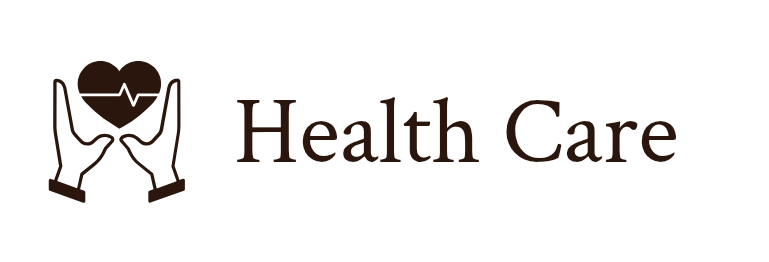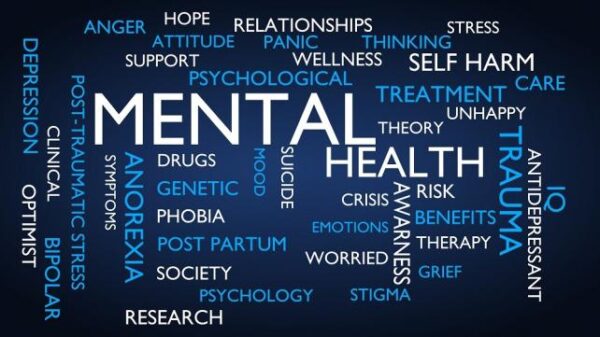Contents
- 1 Breaking the Stigma: Addressing the Taboo Around Youth Mental Health
- 2 Introduction: What is Mental Health Stigma and How Does it Impact Youth?
- 3 Examining the Causes of Mental Health Stigma
- 4 The Risk Factors of Mental Illness in Youth
- 5 There are many risk factors for mental illness in youth. Some of the most common include:
- 6 How to Address the Taboo Around Mental Health for Young People
- 7 Strategies For Supporting Young People’s Mental Health
- 8 Practical Advice On How To Talk About Mental Health With Your Kids
- 9 Here are some practical tips on how to talk about mental health with your kids:
- 10 There are many ways to take action to eradicate the stigma around youth mental health. Here are some ideas:
Breaking the Stigma: Addressing the Taboo Around Youth Mental Health
Breaking the Stigma: Addressing the Taboo Around Youth Mental Health – Mental health has always been a sensitive topic, and when it comes to the youth, it’s often brushed under the rug. It’s alarming that young people face significant mental health issues in today’s fast-paced world. The stigma around discussing mental wellness is one of the most significant obstacles for young people seeking help.
It’s time we break down this taboo and start an open conversation on youth mental health–because every young person deserves to feel safe and supported. In this blog post, we’ll address why it’s essential to talk about youth mental health openly, ways to recognize if someone needs support, and how we can all take action towards breaking the stigma!
Introduction: What is Mental Health Stigma and How Does it Impact Youth?
Mental health stigma is the negative attitudes, beliefs, and behaviors that surround mental illness. It can lead to discrimination and isolation of those who suffer from mental illness, and can prevent them from seeking help. Mental health stigma is a major barrier to treatment and recovery for youth with mental illness.
Youth are especially vulnerable to the effects of mental health stigma. They are still developing their sense of self-identity and are more likely to internalize negative messages about mental illness. This can lead to shame, embarrassment, and a reluctance to seek help. The stigma surrounding mental illness can also make it difficult for youth to form healthy relationships and reach their full potential.
Breaking the stigma around youth mental well-being is essential for promoting treatment and recovery. It starts with education and open dialogue about mental illness. By increasing understanding and awareness, we can reduce the shame and isolation that so many young people face.
Examining the Causes of Mental Health Stigma
Mental well-being stigma is the negative attitudes, beliefs, and behaviors that society attaches to mental illness. This can lead to discrimination and isolation of people with mental illness, which can make their condition worse. There are many causes of mental well-being stigma, including:
-Lack of understanding: Mental illness is often misunderstood. People may think that it’s a personal weakness or something that can be controlled if the person just tries hard enough.
–Fear: Mental illness can be scary because it’s unpredictable and can cause people to behave in ways that are out of character.
-Prejudice: People with mental illness are often seen as dangerous, violent, or lazy. This is especially true for conditions like schizophrenia and bipolar disorder.
-Media portrayal: The media often portrays people with mental illness in a negative light, which contributes to public fear and misunderstanding.
The Risk Factors of Mental Illness in Youth
It’s no secret that mental illness is a taboo topic. For many people, it’s something that is either ignored or not talked about. This is especially true when it comes to youth mental health. It’s estimated that 1 in 5 young people will experience a mental health disorder at some point in their lives. Yet, despite the prevalence of mental illness among youth, there is still a lot of stigma and misunderstanding surrounding the topic.
One of the biggest barriers to addressing youth mental well-being is the lack of awareness and understanding of the issue. Many people don’t realize that mental illness is a real and serious problem for young people. They may think that it’s just a phase or something that kids will grow out of. But the reality is that mental illness can have a lasting and negative impact on a young person’s life if it goes untreated.
There are many risk factors for mental illness in youth. Some of the most common include:
• Family history of mental illness: If you have a parent or other close relative with a mental illness, you’re more likely to develop one yourself.
• Traumatic experiences: Witnessing or experiencing trauma, such as violence, abuse, or natural disasters can increase your risk for developing a mental illness.
• Bullying: Being bullied or witnessing bullying can lead to anxiety, depression, and other mental health disorders.
• Substance abuse: Using
How to Address the Taboo Around Mental Health for Young People
Mental well-being is often seen as a taboo topic, especially for young people. This can be due to a variety of reasons, such as the stigma around mental illness, the lack of understanding about mental health, or the belief that mental health is something that should be dealt with in private. Whatever the reason, the taboo around mental health can have a negative impact on those who are struggling with their mental health.
If you’re a young person struggling with your mental well-being, it’s important to know that you’re not alone. There are many others in your situation and there is help available. Here are some tips for addressing the taboo around mental health:
-Talk to someone you trust about what you’re going through. This could be a friend, family member, teacher, school counselor, or therapist. Talking about your experiences can help you feel more supported and less alone.
-Educate yourself about mental health. There is a lot of information available online and in books. Learning more about mental health can help you better understand your own experiences and how to address them.
-Reach out to a support group or therapy group for young people dealing with similar issues. These groups can provide valuable support and allow you to share your experiences with others who understand what you’re going through.
-Challenge negative beliefs about mental health. If you believe that Mental Health is something to be ashamed of or that it’s not “normal” to struggle with your mental
Strategies For Supporting Young People’s Mental Health
As the world becomes more and more digital, it’s important that we find ways to support young people’s .mental well-being With the rise of social media and the 24-hour news cycle, it’s easy for young people to feel overwhelmed and anxious. Here are some strategies for supporting young people’s mental health:
1. Promote positive body image and self-esteem.
Encourage young people to love and accept themselves for who they are. Help them to see the beauty in themselves and others. Promote a healthy lifestyle, but don’t body shame or compare yourself to others.
2. Teach coping skills and stress management.
Help young people to identify their triggers and warning signs of stress. Teach them healthy coping mechanisms such as deep breathing, journaling, or exercise. Encourage them to seek professional help if they’re struggling to cope with stress or anxiety.
3. Foster positive relationships.
Encourage young people to develop strong, supportive relationships with family, friends, and mentors. Help them to identify toxic relationships and teach them how to set boundaries with others. Encourage them to be open and honest about their feelings with loved ones.
Practical Advice On How To Talk About Mental Health With Your Kids
It’s difficult to know how to talk about mental health with your kids. You may be worried about saying the wrong thing, or you may not even be sure where to start. However, it’s important to have these conversations with your children so that they understand their own mental health and can feel comfortable talking about it with you.
Here are some practical tips on how to talk about mental health with your kids:
1. Normalize the conversation. Let them know that it’s okay to talk about mental health, and that it’s something that everyone experiences. This will help them feel more comfortable opening up to you about their own experiences.
2. Be open and honest. Share your own thoughts and feelings with your children, and encourage them to do the same. This will create a safe space for them to express themselves without judgement.
3. Encourage healthy coping mechanisms. Help your child identify healthy ways to cope with their emotions, such as exercise, journaling, or talking to a trusted friend or family member.
4. Seek professional help if needed. If you’re concerned about your child’s mental health, don’t hesitate to seek professional help from a therapist or counselor
Conclusion: Taking Action to Eradicate the Stigma Around Youth Mental Health
The stigma surrounding youth mental health is a significant barrier to getting young people the help they need. It’s time to break the silence and address this taboo topic.
There are many ways to take action to eradicate the stigma around youth mental health. Here are some ideas:
1. Talk about it: Start a conversation with your friends, family, or co-workers about youth mental health. Help others understand that it’s a real issue that should be taken seriously.
2. Get involved: There are many organizations working to break the stigma around youth mental health. Find one that aligns with your values and get involved in their work.
3. Educate yourself: Learn more about youth mental health so you can be better informed when talking to others about the issue. There are many great resources available online and in libraries.
4. Be an ally: If you know someone who is struggling with their mental health, be there for them. Listen without judgment, offer support, and encourage them to seek professional help if needed.
5. Speak up: If you see or hear someone making fun of someone else for having a mental illness, speak up and let them know it’s not okay. Showing compassion and understanding can go a long way in breaking down stereotypes and misconceptions about mental illness.

